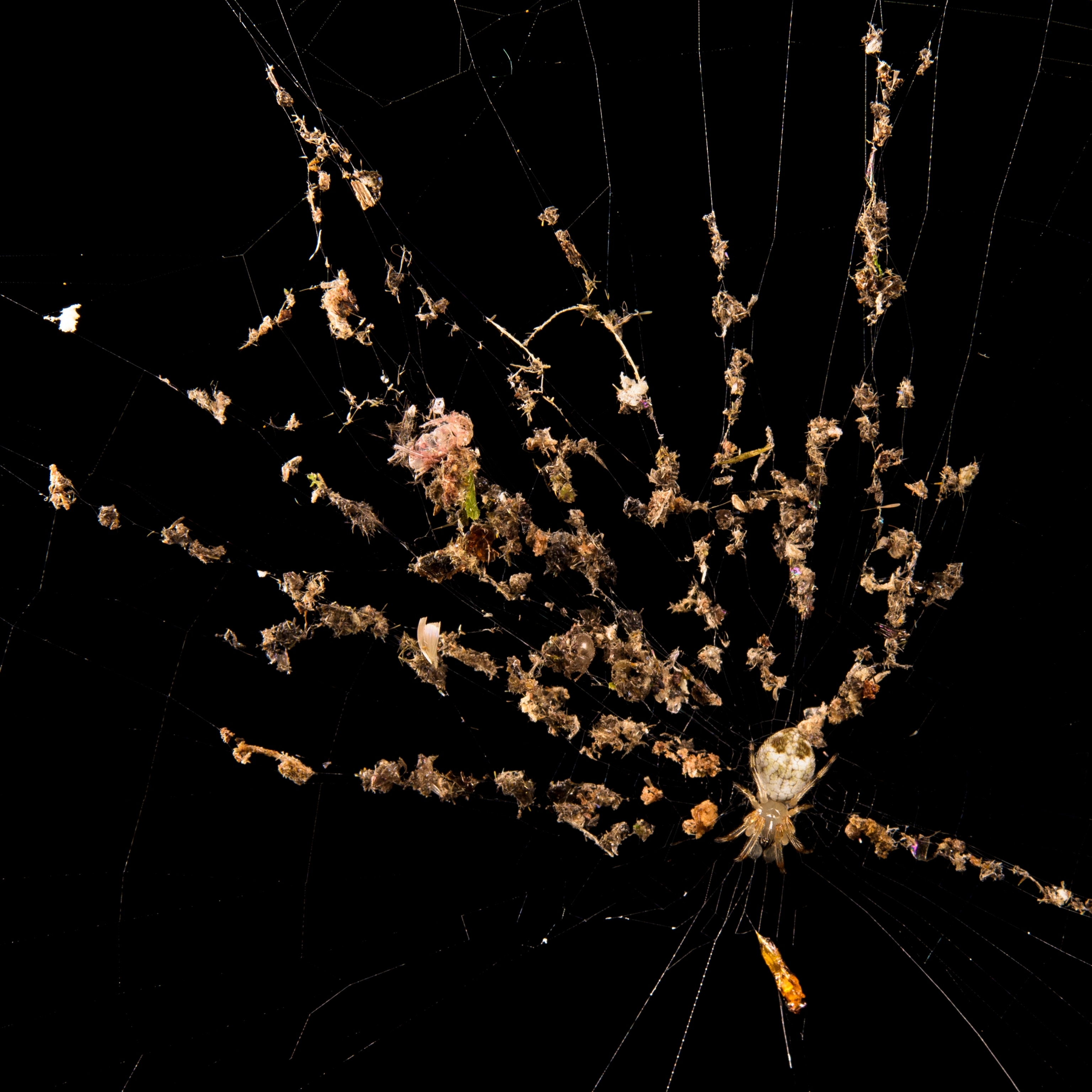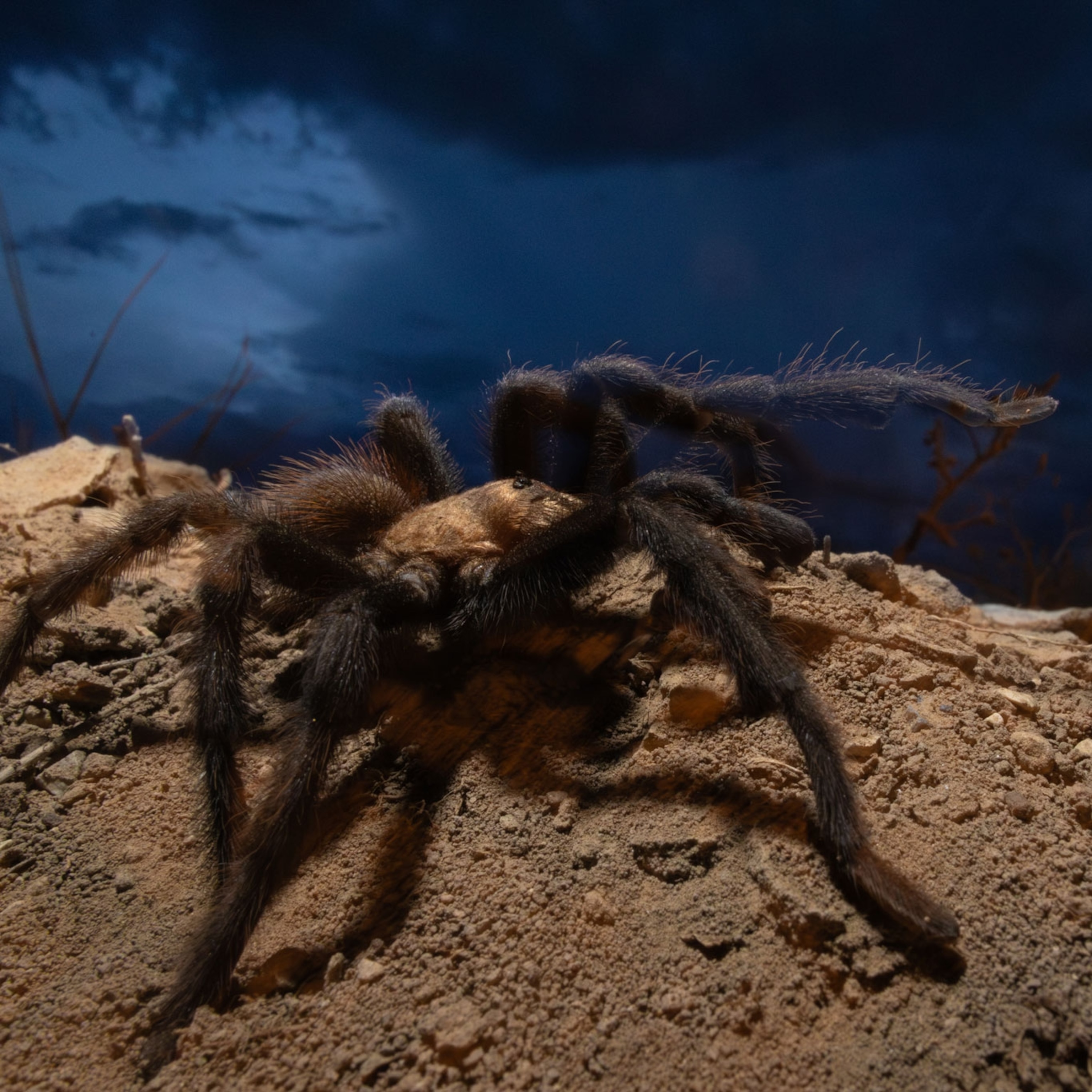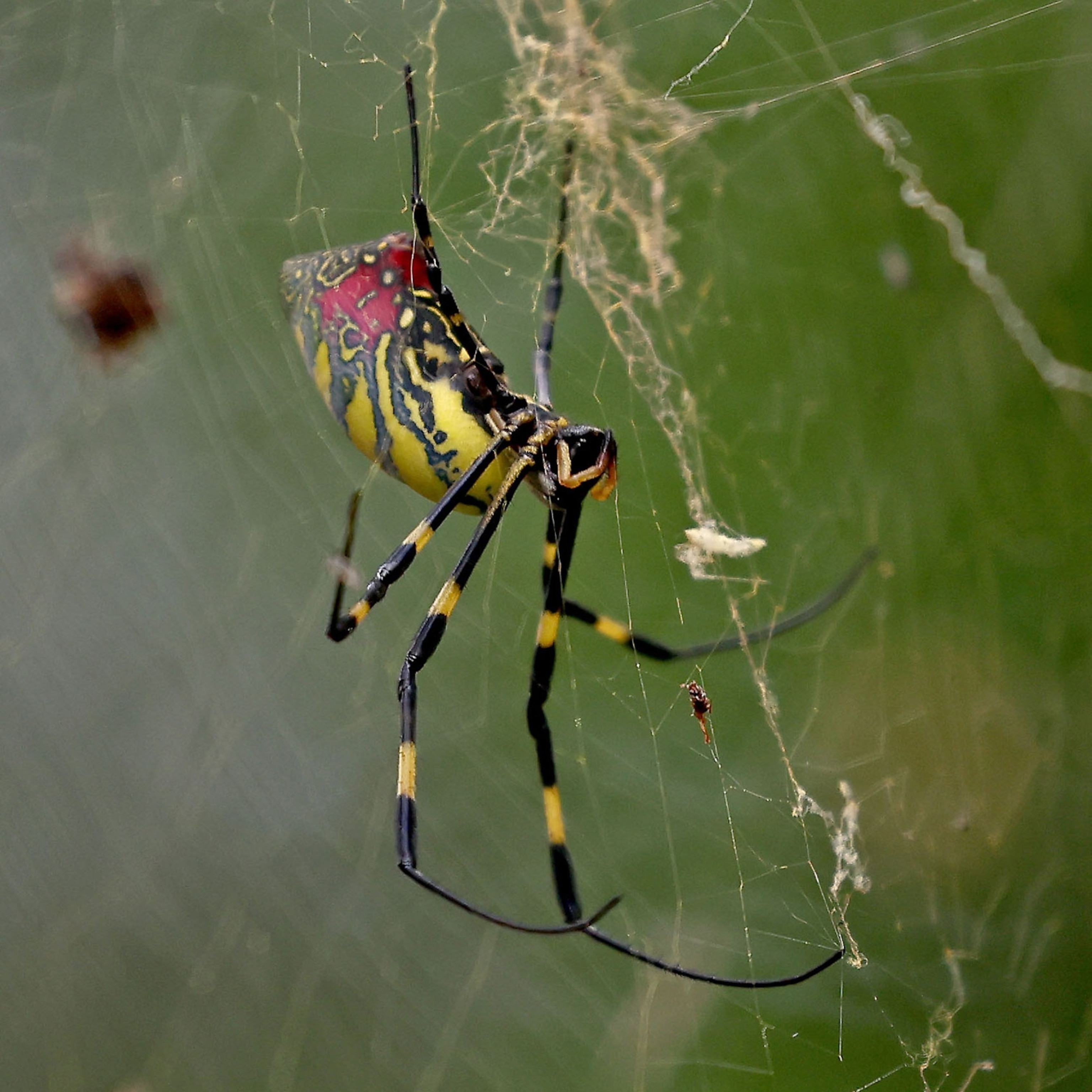
These spiders ‘catapult’ themselves to avoid getting eaten after mating
In one species of orb-weaving spider, males flee from cannibal females by launching into the air—a never-before-seen behavior.
Male spiders at risk of getting eaten by females have evolved a clever escape: They launch their bodies into the air after mating.
When Shichang Zhang observed the phenomenon in a member of the hackled orb-weaver family (Philoponella prominens), it was the first known example of male spiders catapulting themselves to escape sexual cannibalism. An ecologist at Hubei University in Wuhan, China, Zhang described being surprised when he observed the behavior in the lab there.
“The super-fast movement is usually used by animals to escape predators or catch prey, not to counter against a sexual partner,” he said by email. (Read about a male spider that destroys a female's reproductive parts to prevent future mating.)
In Zhang and colleagues’ study, published today in the journal Current Biology, all the male spiders who vaulted away from females after mating survived. High-speed cameras revealed that the males of this species, each about the size of a letter on a computer keyboard, make an average of 175 spins per second in the escape maneuver.
The researchers “provide solid evidence that this compelling behavior is a sexual adaptation,” says Greta Binford, an arachnologist at Lewis & Clark College in Portland, Oregon, who wasn’t involved in the study. "I don't know of other studies that have shown that.”
Literal dinner dates
About 290 species of hackled orb weavers exist around the world. In China, P. prominens is a common resident of gardens, fields, and forests, forming colonies of 300 or more spiders. Binford, who has studied orb weavers in Peru, describes their homes as “an apartment complex, where each spider has their own little orb web that’s connected to the others by some silk scaffolding.”
Female hackled orb weavers, like the females of many other spider species, will try to eat their sex partners after mating, possibly because the males are smaller and easier to catch than other prey. So to initiate mating, a male will approach a female carefully. He will use a set of appendages called pedipalps to deliver a sperm packet into the female’s genital opening. Then the male will quickly leap away. (Read how some male spiders give “back rubs” to seduce their mates.)
To observe this catapulting up close, Zhang and colleagues collected young spiders from a nearby garden and reared them in isolation in the lab. The team then placed one unmated male into the web of one unmated female, recording their interactions. The team kept the female well fed on fruit flies so hunger wouldn’t influence how she treated the male.
The team repeated the experiment with 180 pairs of spiders and recorded 155 successful matings. In 152 of those cases, males accomplished the insemination, then launched themselves out of harm’s way and survived. In the three cases in which the males did not catapult themselves away in time, they were captured, killed, and consumed by the female.
In a separate set of experiments, researchers tested the effects of modifying male spiders’ means of escape in different ways, such as removing a pair of front legs. Those impaired males, like the males that didn’t leap in time, became literal dinner dates, the researchers found.
Getting a leg up
By poring over the high-speed cameras’ high-resolution images frame by frame, the research team “found out the secret of catapulting,” Zhang says.
The key, the team learned, is the tibia metatarsus joint on the spiders’ front legs. During mating, these legs are folded against the female. Once finished, the males squeeze a muscle in their cephalothorax, or the front part of the body, that pushes hemolymph (a spider’s version of blood) into its front legs, thrusting them off the female. “It's like if you squeezed a balloon that had little arms sticking out, it would straighten those arms,” Binford explains. (Learn how some male spiders cannibalize females, too.)
Males also make a dragline—a piece of silk—that lands them in their web a good distance away from the female. This anchor is a safety measure “in case the females are aggressive and suddenly come over to kill them,” Zhang says.
In the experiments, if the researchers cut that dragline, the catapulting males landed on the ground instead of in the web, after which they would court the female but not try to mate. It’s likely because, without his dragline, the spider knows he can’t escape after mating, so he dares not try, Zhang says.
But why would that male even bother courting if he doesn’t intend to try to mate? It may be that if the female sees him as a prospective mate, she won’t try to eat him immediately, says Eileen Hebets, an arachnologist at the University of Nebraska in Lincoln who wasn’t involved in the study.
Bizarre defenses
Across the spider kingdom, males deploy many “bizarre” strategies to avoid being eaten, Hebets says. Some males tie females up with silk before transferring sperm, Hebets says, or present the female with a silk-wrapped "gift," presumably to distract her.
Other males, though, may make the ultimate sacrifice in the interest of passing on their genes. If a male succeeds in mating and stays around to be the meal, the female may be sufficiently satiated that she doesn’t seek other males—and bears a brood from the sperm of her late, devoured mate. (See 10 beautiful pictures that will make you love spiders.)
In Hebets’ view, the study by Zhang’s team “provides another great example of the seemingly endless opportunities for scientific discovery that spiders can provide to observant, curious, and passionate scientists.”








